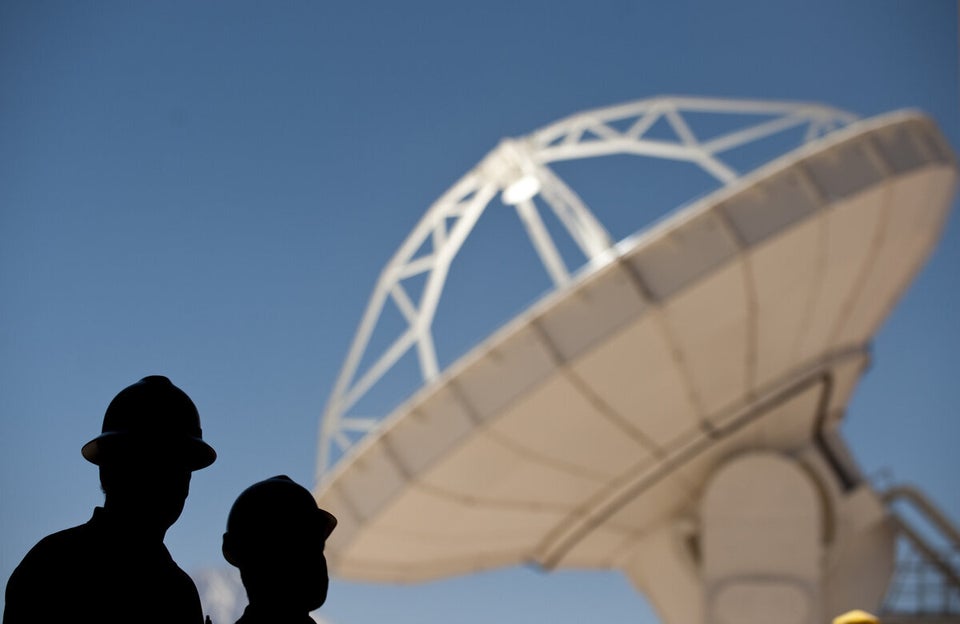The world's most powerful radio telescope will let scientists watch planets as they are being born around alien stars, astronomers have said ahead of its official inauguration.
The Atacama Large Millimeter/submillimeter Array (Alma) is a giant, 66-telescope instrument located in Northern Chile.
Spread over 16 square kilometers, at an altitude of 5,000 meters above sea level, the telescope is able to peer beyond Earth's atmosphere with greater clarity than any other Earth-bound observatory.
The telescope's antennas are mounted on wheels, and can be moved to focus on different objects. Scientists working there have to wear oxygen masks because the atmosphere is so thin.
And while it isn't officially opened until 13 March, it sounds like the effort has been worth it - Alma is already working and able to give us new insights into the incredible variety of deep space.
In a news conference, scientists said they hope to be able to literally watch the formation of planets in the cold dust surrounding new stars.
It is thought that solar systems like our own were formed from a huge cloud of dust, rock and gas, which span in a disk around our sun shortly after its birth.
Gradually, it is thought, that matter slowly clumped together in a violent, collision-filled chaos, until the planets as we know them today were finally formed.
Alma will search for these young planets by looking for dust clouds around stars.
James Ulvestad of the National Science Foundation said in a press conference that this work has already begun.
"Alma already has seen dust rings around stars that are very narrow, and by modeling ... you can infer the dust ring has planets inside and outside the ring," he said, according to Space.com.
"Even though you can’t see the planet, you can see the effects of the planet."
The result could be a huge boom in the number of confirmed planets and alien solar systems, which have recently been exploding in number thanks to other instruments like the Kepler space telescope.
